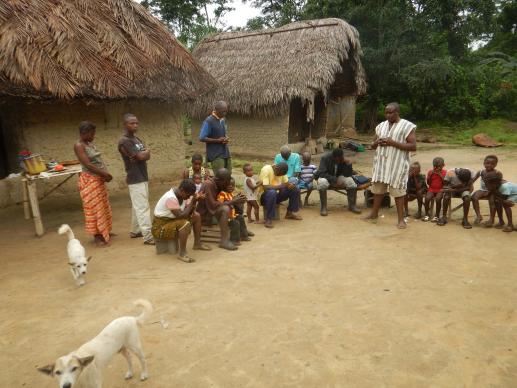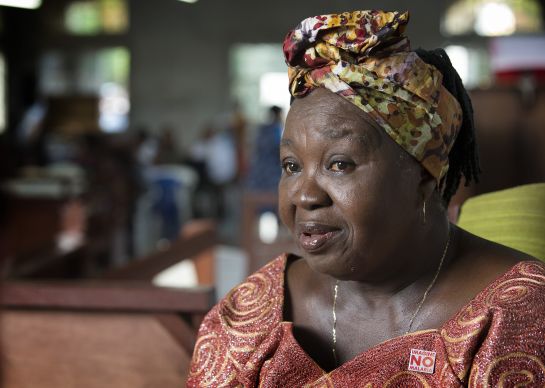“Awao! Awa!” (“Come on! Come!”) Mohamed Goma, the village head, called as a teenager repeatedly hits an old suspended railroad metal that serves as a bell to call the community. “Bring your own seats,” Goma said, Because the small village community hall lacks enough seats for all attendees, people are encouraged to bring their own.
During the summer, the health care workers familiarized themselves with target communities in the district, mapping the area and identifying health needs.P
They repeated the process in seven other remote target communities in the Bo District to get first-hand primary healthcare information.
The project – called “Kuimei,” meaning “mother” or “one who cares” in the local Mende language – launched in September in Bo.
Beatrice Gbanga, the Sierra Leone Conference medical coordinator, said the project is mostly for mothers and children under five. But she said that in Liberia it had a “spillover impact on the health of the communities as a whole.” Gbanga added that communities in Bo are eager to see how it will transform lives.

Empowering communities
“It is going to help change the behavior of our people toward their health,” Gbanga said. “It is also going to empower them to be part of decision making; [to] be part of implementation of their healthcare programs.”
Baseline surveys for the project, in progress in eight target communities, will also measure impact once it is fully underway.
Even before the Ebola crisis, Sierra Leone ranked among countries with the highest infant mortality and maternal morbidity in the world. The World Health Organization listed Sierra Leone in its 2013 report as the country with the highest maternal mortality rate.
The International Business Times of the United Kingdom said the WHO report found that of the 40 countries with the highest maternal mortality rate in 2013, Sierra Leone was estimated to have the highest, with 1,100 maternal deaths for each live birth. “Many initiatives are being carried out in the country in order to reduce the risk of maternal death,” the Times reported.
Although Ebola, which took a huge toll on the population, is now subsiding, the country still faces more health challenges. Nearly 4,000 have died from Ebola in Sierra Leone and this past week marked the first week with no Ebola cases since the outbreak began.
The people of Kalia Village, one target community, said the project could not have come at a better time, since the community was the hardest hit by Ebola in the Bo District. The village became an Ebola hotspot when a local, revered Islamic cleric died of the disease. Knowing little about Ebola at the time, the villagers washed the corpse and rubbed the bathwater on their foreheads, believing it would make them as wise as the Muslim cleric who died. Many adults who rubbed the bathwater died as a result, leaving behind scores of Ebola orphans.
Prevention essential
Since 1983, Curamericas Global has worked in Latin America, the Caribbean and Africa. Recent and current projects were in areas in Guatemala, Haiti and Liberia that have some of the highest child and maternal mortality rates in the world. Traditionally, these high mortality statistics come from rural or semi-urban communities. Preventable diseases such as malnutrition and pneumonia as well as complications from childbirth can lead to death in areas with limited health-care access.
The hope is that launching the program in the rural communities of Bo will reduce Sierra Leone’s high maternal and child mortality rates in those areas.
Curamericas Global uses a community-based, impact-oriented methodology that has proven adaptable to diverse settings and drastically reduces maternal and child mortality rates by combating the causes of death specific to an area. It also allows local health workers to identify and treat preventable medical conditions and measure outcomes accurately within their communities.
The three primary ways for reaching target populations with health promotion and other primary healthcare services are:
- Home visits – Each health worker, assigned to a clearly defined target area, is responsible for monitoring the health status of all residents within that area.
- Group meetings – Health education and services are offered in a centralized community location on a given day. Health workers then follow up with home visits to ensure complete, equitable coverage.
- Care groups – Volunteer peer educators carry health-education messages and services to 10 assigned households while bringing vital information back to project staff. This expands the reach and the intensity of the health promotion with no cost.
Last Updated on January 30, 2024

